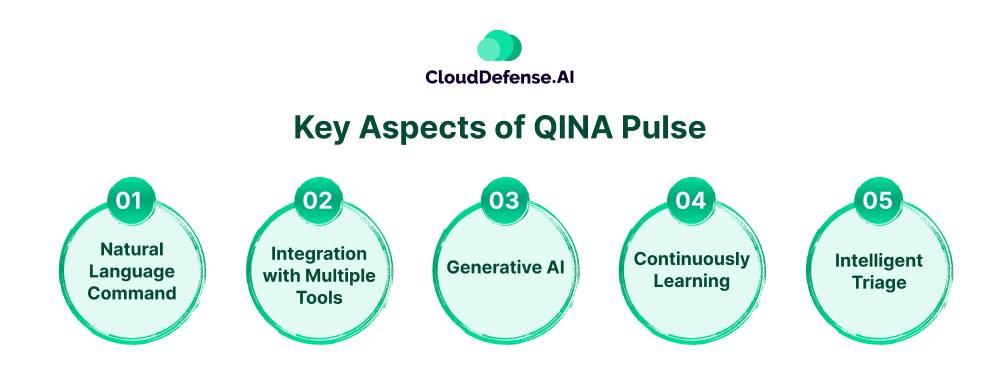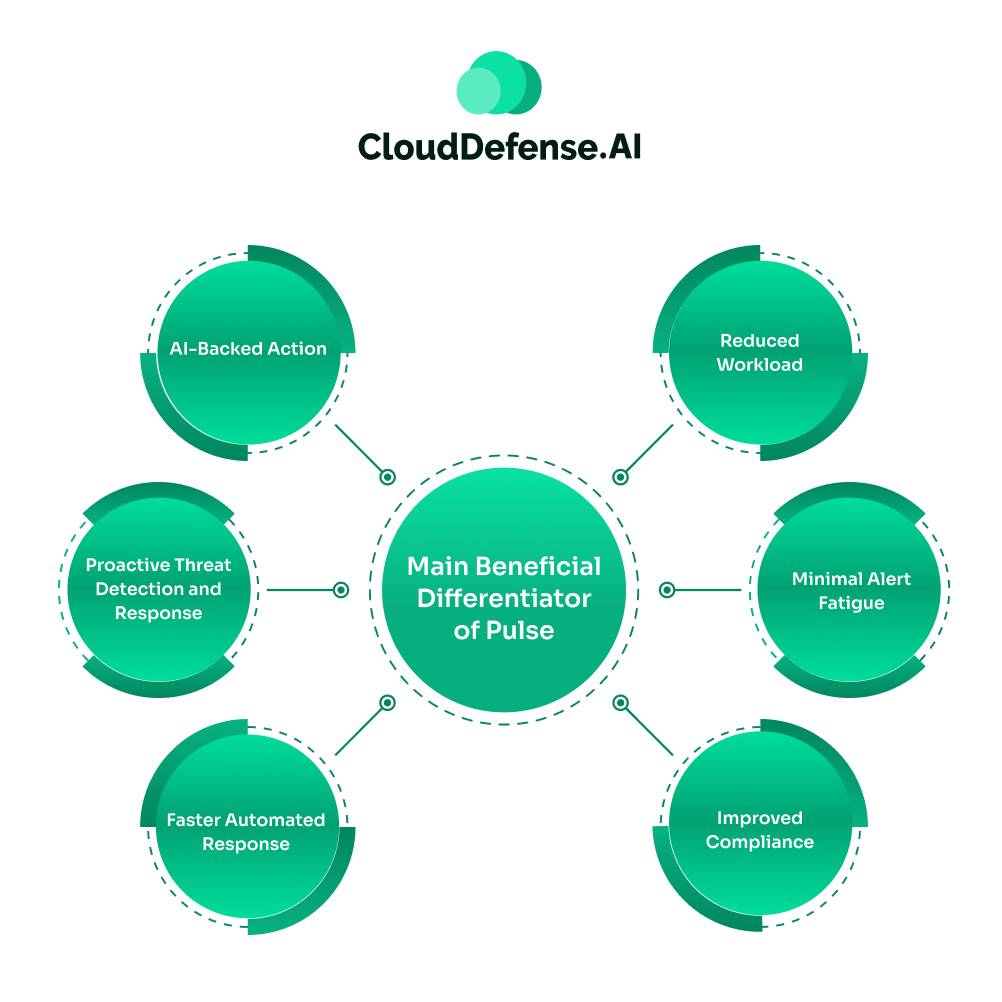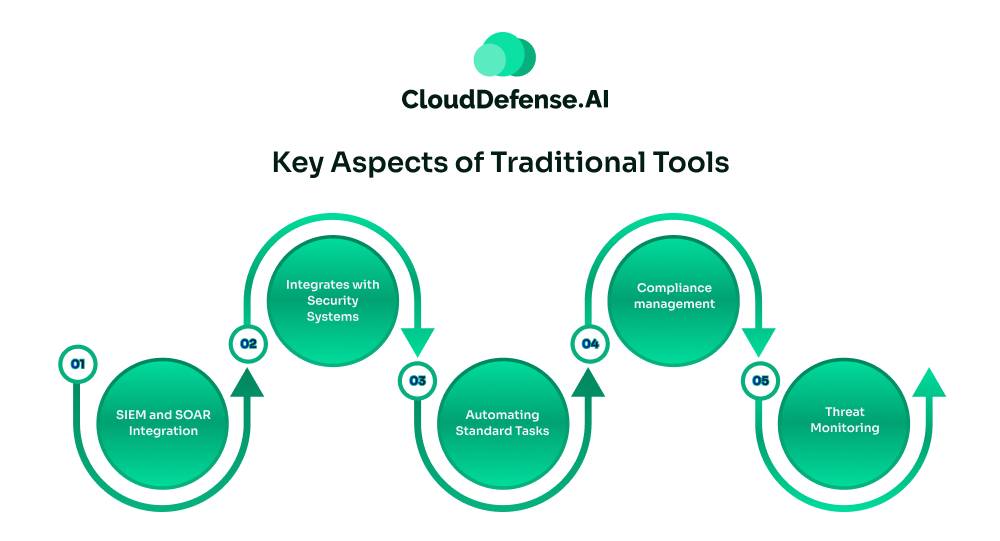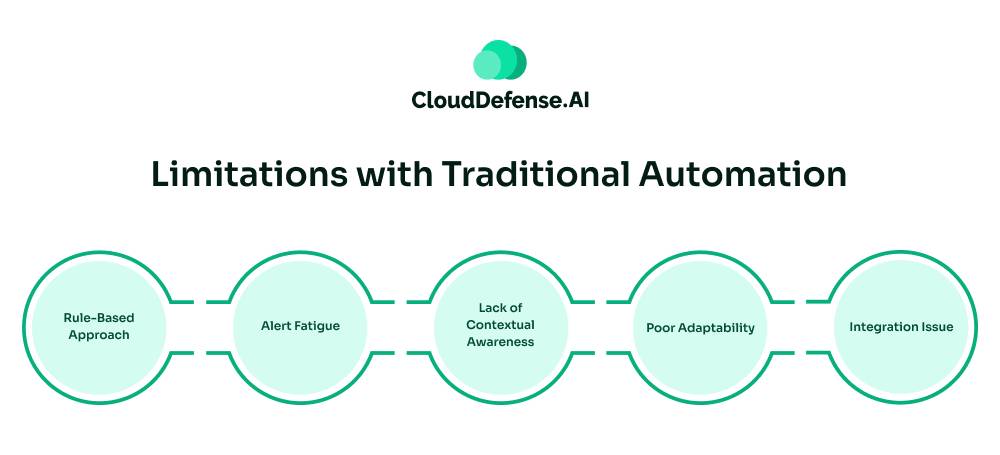In today’s evolving cybersecurity landscape, security teams are always engaged in a relentless battle against modern cyber threats. They are facing an increasing number of attacks along with complex and advanced issues. So, what are security professionals from top organizations doing to cope with it?
They are gradually shifting from traditional security automation tools to AI-powered security assistant solutions like QINA Pulse. While traditional security automation tools still serve as the foundation, QINA Pulse offers an AI-backed automation approach.
This shift highlights the QINA Pulse vs Traditional Tools debate, as organizations evaluate which approach truly delivers better security outcomes. QINA Pulse is a game-changing solution that empowers security professionals with AI-based capabilities and a proactive security approach. In the QINA Pulse vs Traditional Tools comparison, the main question arises: which automation wins? In this comparison blog, we will take a detailed look at QINA Pulse and traditional tools and how they differ from each other.
QINA Pulse: Next-Gen Security Automation Tool
QINA Pulse is the next-generation security tool that assists you with an advanced approach to security automation. It functions as a modern AI security assistant that leverages AI and ML to automate security tasks through plain English commands. It seamlessly integrates all your security tools and databases for smart context awareness and data aggregation.
QINA Pulse takes a dynamic approach where it understands the security context, team workflows, policies, and business goals of your organization. As a result, this enables it to provide an intelligent and adaptable security automation solution with actionable insight. Pulse provides a real-time chatbot within your AppSec platform that enables your team to make queries and schedule automation tasks.
Key Aspects of QINA Pulse

QINA Pulse is a revolutionary security automation tool that takes security automation to a new height to address evolving cybersecurity. The key aspects you should know about this tool in this comparison blog are:
- Natural Language Command: A major highlight of QINA Pulse is that it enables your team to make commands in English to automate all the security tasks. You just have to put commands in English, and it will accomplish it in seconds.
- Integration with Multiple Tools: Pulse integrates easily with all the security tools and systems in your infrastructure. It offers one-click integration for GitHub, Jira, Slack, and other enterprise tools to scan all the containers, applications, and repositories. It helps with contextual awareness and seamless automation.
- Generative AI: Pulse, as an AI security assistant, utilizes generative AI models to transform complex data into actionable insights. It not only streamlines the security automation tasks but also enables the tool to make smart actions, especially for incident response.
- Continuously Learning: Pulse is based on different AI models that enable it to continuously learn and evolve from multiple data streams. As it is evolving with real-time data, it makes the tool adaptable to new security threats and patterns.
- Intelligent Triage: Intelligent triage serves as a highlight aspect of this security automation tool. It automatically performs smart triage on all the threat data based on various business-related contexts and provides a prioritised threat alert.
Main Beneficial Differentiator of Pulse

When it comes to the QINA Pulse vs Traditional Tools battle, Pulse offers you many benefits. These advantages are:
- AI-Backed Action: From scheduling security scans and generating reports to providing prioritised alerts, it intelligently automates all the tasks. It utilizes the contextual understanding to deliver an organization-based solution.
- Proactive Threat Detection and Response: QINA Pulse helps your team to take a proactive approach when it comes to detecting and remediating security threats. It can identify vulnerabilities and lingering threats in the system. Based on the context of the threat, it also automates appropriate remediation action for the best results.
- Faster Automated Response: A significant benefit of Pulse over traditional tools, this comparison blog highlights is the quicker automation. In terms of remediation response, it leverages intelligent insight along automated workflows to provide fast remediation actions.
- Reduced Workload Pulse integrates with all your tools and AppSec platform to automate all the security tasks. It acts as a security copilot for your analysts, enabling them to automate tasks with plain commands. It helps them to focus on complex threats that require their intervention.
- Minimal Alert Fatigue: It provides your security analysts with prioritised threat alerts, negating all the false positives. It prioritises based on impact and context, allowing your team to focus on highly severe threats.
- Improved Compliance: With Pulse integrated into your AppSec platform, you will have simplified compliance management. It helps you in maintaining compliance with industry standards by automating monitoring and security policy enforcement processes. It also holds the capability to generate compliance reports within 30 seconds.
Potential Drawbacks of QINA Pulse
None of the tools in the world is perfect, and neither is QINA Pulse. Here are some potential drawbacks of this tool:
- AI Bias: The output and effectiveness of Pulse depend largely upon the quality of the data and algorithm it has been trained on. Thus, it can lead to inaccuracies in the security automation, hindering the whole effort.
- Skillset Necessity: Even though QINA Pulse is a user-friendly tool, security professionals need to develop skills to manage it effectively. Analysts need to learn how they get the best out of Pulse when putting commands.
- Significant Investment: It is an enterprise-grade tool that has been designed by organizations with consistent security capabilities at a competitive price. However, it can be slightly costly for SMBs who generally have a low capital allocation for security infrastructure.
Traditional Security Automation Tools
Traditional tools for security automation serve as a foundation that leverages static rules and playbooks to automate security tasks. It works on a definitive principle where a specific security automation is triggered when a certain type of security event occurs. It is completely based on predefined threat signatures and scripts, and can’t automate tasks dynamically based on the context and situation.
Traditional tools assist in performing a wide range of security tasks, ranging from vulnerability scanning and log analysis to incident response. It can detect security threats that match the predefined threat patterns and trigger a response accordingly. However, when it comes to automating complex tasks like addressing an advanced incident, it requires human intervention.
Key Aspects of Traditional Tools

Here are key aspects associated with traditional security automation tools:
- SIEM and SOAR Integration: Traditional tools leverage the SIEM system to collect aggregated data from every part of the system. SIEM correlates all the data based on pre-defined rules and creates alerts regarding threats. On the other hand, SOAR collects the alert and automates the response based on preset playbooks.
- Integrates with Security Systems: It can integrate with your existing security workflows and system with zero to minimal configuration requirements. It helps in ingesting data and automating tasks across the security infrastructure.
- Automating Standard Tasks: Whether you want to automate vulnerability scanning or patch management, it helps automate many repetitive security tasks. You can trigger the automation after making updates.
- Compliance management: Standard security automation streamlines the compliance management of an organization by automating many tasks. It usually involves audit logging and report generation that are needed for maintaining compliance requirements.
- Threat Monitoring: It automates the process of monitoring the system and infrastructure for security threats and vulnerabilities. It uses pre-defined vulnerability patterns to identify threats in the systems.
Primary Advantages of Traditional Automation
Traditional security automation tools benefit your organization in many ways:
- Reduced Manual Effort: It helps your team in automating a lot of security tasks, enabling them to free up their valuable time from grinding repetitive tasks. Even though it automates tasks, if you involve a pulse vs legacy tools comparison, it requires human expertise.
- Reliable Threat Management: When it comes to handling low-effort and known security threats, it offers an effective result. It can easily handle threats with known IoCs and provides effective management.
- Cost-Effective: A huge benefit of traditional automation tools is that they significantly lower your operational cost. It helps in automating most routine security tasks and prevents you from allocating more security professionals.
- Lower Human Error: The pre-defined playbooks and rules ensure all your security operations are consistently executed. As a result, it reduces the chance of any issue that arises due to human error.
Limitations with Traditional Automation

A major reason Pulse stands superior in the QINA Pulse vs Traditional Tools battle is due to the high limitations of the latter tool. These limitations are:
- Rule-Based Approach: All the traditional security automation tools rely on predefined rules and playbooks for incidents. As a result, it can’t address zero-day or complex threats that don’t match known threat signatures, making it ineffective.
- Alert Fatigue: Since it lacks a security context, it often generates a high amount of alerts, mostly false positives. Developers and security professionals have to invest a lot of time to perform manual triage on all the alerts, leading to high alert fatigue.
- Lack of Contextual Awareness: Traditional tools lack the ability to understand the complete security context of various incidents and events. The inability to understand the business goal and organization’s security policies, this tool generates a significant amount of alerts for your analysts.
- Poor Adaptability: In pulse vs legacy tools, traditional tools fall short in terms of adaptability. The tools can’t cope with evolving cyber threats with increasing sophistication in techniques. Analysts have to manually update the tool to make it effective against modern security threats. Moreover, the updated playbook needs to be tested before implementation, leading to high maintenance.
- Integration Issue: In a traditional security infrastructure, most security tools work in siloes. Thus, integration with multiple security tools and legacy infrastructure creates a lot of complexities.
Feature-by-Feature QINA Pulse vs Traditional Tools of security automation Comparison
Here is a brief QINA Pulse vs traditional security automation tools comparison to give you an idea of how they are different from each other:
| Traditional Security Automation | QINA Pulse | |
| Primary Mechanism | Rule-based and predefined signature approach. | Contextual awareness and learning based. Leverages AI and behavioural analysis. |
| Threat Detection | Takes a reactive approach and identifies threats with known patterns. | Proactive threat detection based on anomaly to identify known and zero-day attacks. |
| Novel Attacks | It is inefficient against novel attacks, | Excels in detecting advanced and novel attacks using the latest threat data. |
| Adaptability | Requires rule and signature updates at regular intervals | It is continuously learning and adapting. It adjusts automation capability based on context. |
| False Positives | Lack of contextual awareness leads to high false positives. | Smartly prioritised and context-rich threat alerts with minimal false positives. |
| Cost Efficiency | It has a higher operational cost. | Initial investment is slightly high, but it can scale without increasing operational cost. |
| Human Intervention | Requires human intervention for creating playbooks and writing scripts. | Only requires human intervention for making commands in natural language. |
Bottom Line: Which Security Automation Wins?
In the QINA Pulse vs Traditional Tools comparison, Pulse gets the upper hand as it caters to most modern organizations’ requirements. However, in a real-world scenario, neither of the security automation tools can be considered a clear “winner”.
As a modern organization, you can utilize the strength of both tools to create resilient security automation against modern cyber threats. Based on your organization’s requirements, you combine QINA Pulse with traditional automation to provide a comprehensive approach. The traditional security automation provides you with the foundation to handle low-risk routine security tasks and stability for a robust defense. Whereas QINA Pulse brings intelligence, context, speed, and adaptability into security automation to tackle evolving and high-volume threats. Moreover, it will help your team respond proactively and accurately to complex threats. To learn more about QINA Pulse, you can request a free live demo and discover how it can transform your automation efforts.







